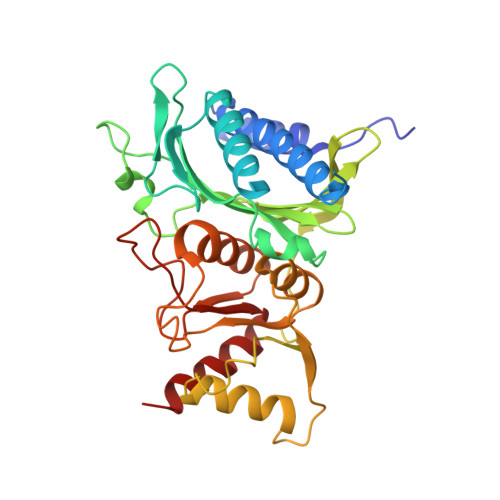Crystal structure of the neutral form of fructose-1,6-bisphosphatase complexed with the product fructose 6-phosphate at 2.1-A resolution.
Ke, H.M., Zhang, Y.P., Liang, J.Y., Lipscomb, W.N.(1991) Proc Natl Acad Sci U S A 88: 2989-2993
- PubMed: 1849642
- DOI: https://doi.org/10.1073/pnas.88.8.2989
- PubMed Abstract:
The crystal structure of fructose-1,6-bisphosphatase (EC 3.1.3.11) complexed with the product fructose 6-phosphate (F6P) has been refined at 2.1-A resolution to an R factor of 0.177 with root-mean-square deviations of 0.014 A and 2.9 degrees from the ideal geometries of bond lengths and bond angles, respectively. The secondary structures but not the trace of the unligated enzyme have been slightly revised in the F6P complex at this higher resolution. Helix H4 in the unligated structure has been refined to a helix-like coil, and two very short 3(10) helices have been found, one in H4 and one in H5. F6P at 10 mM concentration in the absence of divalent metals in our study shows major binding at the active site and minor binding at the AMP site. The major site has almost equal full occupancy in the C1 and C2 chains of the crystallographic asymmetric unit, while the minor site shows occupancy only in the C1 chain at about 50%. The electron density in both (2Fo - Fc) and (Fo - Fc) maps calculated by omitting F6P slightly favors the beta anomer of D-F6P over the alpha anomer. Possible functions of the active-site residues are discussed, and candidates are suggested for site-directed mutagenesis.
Organizational Affiliation:
Gibbs Chemical Laboratory, Harvard University, Cambridge, MA 02138.















